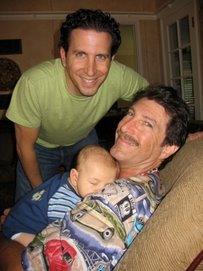Today I received great news from my broker, Robert Bluman (www.RobertandDianne.com) I placed an offer on an apartment building in Burbank and the offer was accepted. BUT, how it works when you buy a house is not how it works when you buy an apartment building. There are phases that have to be completed before the deal is done.
Phase one – find a property
a. Create criteria for the income property that you want based on your long term goals, preferences, ability to manage (or provide to a management company), cash flow, ROI, deferred maintenance, mismanagement, ability to add value, whatever.
b. Then find a property that fits your criteria. That is the most difficult part; you could look on www.Loopnet.com, the classified ads, work with one broker or several brokers, do a mail campaign to apartment owners, or whatever. While I found a few that appeared to be a fit over the last 18 months, it does not mean any of my offers were accepted.
c. Make a written offer on the property and put up a cash deposit. With apartment buildings you do this BEFORE you see the inside of the property. When buying a house, you do not make an offer until AFTER you have seen the inside of the property.
Phase two – make an offer
a. If your offer is at all within the range of acceptable, you continue to negotiate the price and terms until you and the seller come to an agreement. Terms are just as important as price, and sometimes more important. Examples: Do they want to carry back any financing? Do they need a short or a long escrow? Are they willing to do any repairs?
b. After you come to an agreement on the offer, you now set up an appointment to see the inside of the units. This is called the "inspection period." It would occur 7, 10 or 14 days from the date the offer is accepted. This is one of the terms that is negotiated.
c. This is a two way street; as the buyer I need to prove that I have the ability to buy the building; that I have the cash for the down payment; that I know what I am doing (own other properties already); and present documents that prove what I say.
The seller needs to provide an accounting for the building, leases, permits, estoppels, and proof of expenses like utility bills and maintenance.
Phase three – enter escrow
a. If I like what I see and the seller likes what he sees, we now enter escrow. If I don't like what I see, the process stops and we do not enter escrow. If the seller doesn't like what he sees, the process stops and we do not enter escrow.
b. Escrow continues with all of the documents being prepared so the sale can close, down payment funds are verified, liens are handled, financing arranged, deeds prepared and so on.
c. If items were found that could not be discovered in the initial inspection, then more negotiation can take place. A cracked foundation is discovered, a leaking firebox for the heater, a lack of permits for remodeling or the replacement of water-heaters, whatever.
d. When everything can be finalized and signed and recorded, escrow will close. The buyer gets title and the keys to the property and the seller gets the money.
Phase four – dealing with the tenants and the property
a. Now you notify the tenants about the change of ownership and where to direct rent payments; get leases signed if they were missing (and if you want them), evict tenants that have not paid rent and do on.
b. Begin to take action based on your criteria. Here are my criteria: I look for buildings that have been mismanaged and have deferred maintenance. This usually means it has below market rents and I will be able to purchase it at a good price. I will then invest in the remodeling work and raise rents to market, or above market rates. In the Los Angeles market, for every dollar of additional rent that I create I have added ten dollars of additional value to the building. To see our properties, visit www.ValleyVintage.com
Rennie



No comments:
Post a Comment